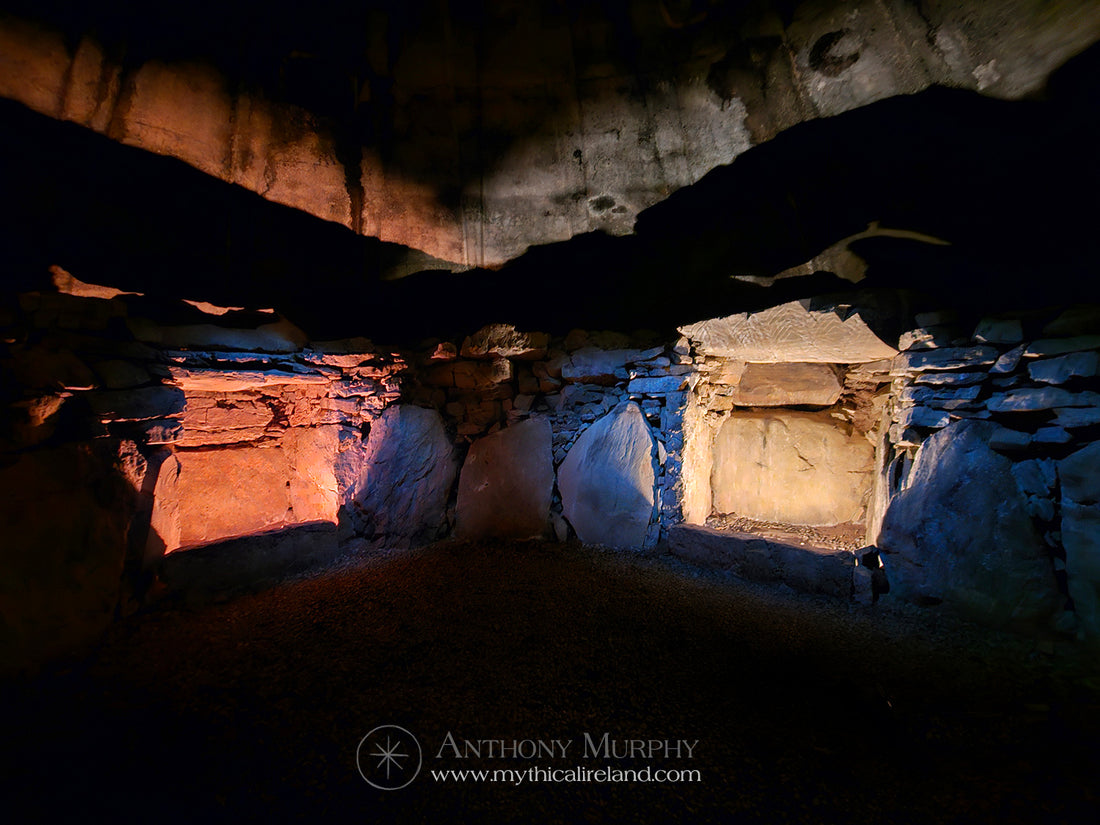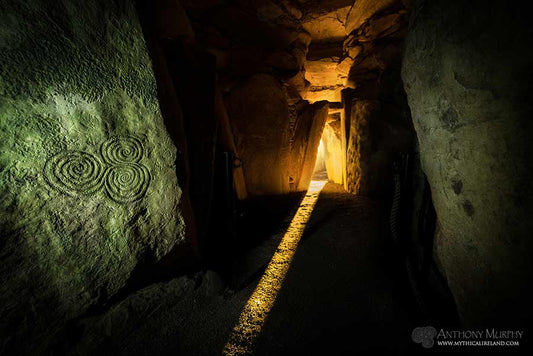
Feeling the 'Fuar' of Fourknocks
Fourknocks is a most special and remarkable Neolithic monument. Despite its apparent minuscule size, its chamber has a deceptively sizeable area – a large, interior, welcoming space.
However, standing in the chamber of Fourknocks today is not like standing in there in the Neolithic, around 5,000 years ago or so, when the monument was still being used by the people who built it.

The right hand recess at Fourknocks with its beautifully decorated lintel.
Back then, they buried the fragmented cremated and unburnt bones of their family members in the three recesses of Fourknocks, so to enter in there was to be among the remains of your ancestors. At some point they also began using the entrance passage for burials, so it is clear that the monument reached a point where the community no longer went inside it.

The left hand recess of Fourknocks.
Before the excavation of Fourknocks, which took place in September and October of 1950, the monument had the appearance of a sad, overgrown small mound covered with brambles and bushes and trees. That had been its condition for much of the 5,000-year period since it was built.
Today, it has a modern concrete domed roof, which protects the megalithic art from the harshness of the Irish winter – something that not all visitors like the aesthetics of, but which most agree does the job of keeping rain and frost away from those most precious stones.

The end recess of Fourknocks.
One thing that is clear on a very cold and windy winter's day like today is that that domed roof is very capable of keeping the cold out. While filming and taking photos outside, my eyes were running and my face was numb with the cold wind. No wonder, I thought to myself, this place supposedly means the 'Cold Hills' (Fuair Cnoic, Fourknocks). It was Baltic up there today!

The beautiful lintel stone of the right recess.
Yet, when we went into the chamber (I was there to film an interview about Irish heritage with Joe Monks Creative), and closed the iron door behind us, there was a sense of warmth, as if something was aglow in there. And we brought lights, and made it even warmer, and for a time Fourknocks lost all the sense of its tomb nature and in the warm light of that hearty glow, it felt more like a 𝘣𝘳𝘶𝘪𝘥𝘦𝘯 of old, a hostel, banqueting hall or mansion offering shelter, food and drink.
In the imaginations of the old bards, these ancient tombs of the Stone Age were transformed into mansions or abodes, places where the Tuatha Dé Danann gods dwelt in comfort, with an endless supply of luscious food and drink, and with otherwordly music drifting through those sacred spaces.

The beautiful lozenges and chevrons on the end recess lintel stone.
This morning, for a short time, that beautiful monument felt transformed, and for a few brief moments, the 𝘧𝘶𝘢𝘳 of Fourknocks had been banished and there was only warmth and light.

The author at Fourknocks. Photo: Joe Monks.
Many thanks to Joe Monks Creative for asking me to be interviewed about the preservation of our heritage, and for bringing his lighting kit!









